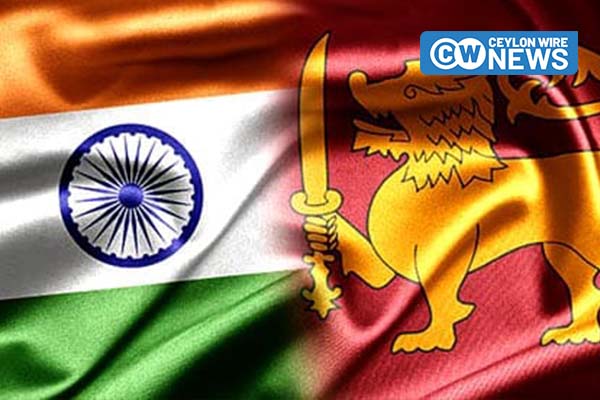SYNOPSIS
In a diplomatic milestone on December 21, 2023, India’s new High Commissioner to Sri Lanka, Santosh Jha assumed office, showcasing a renewed commitment to bilateral cooperation. Mr. Jha brings extensive experience to his role, having been a key contributor to the India-Sri Lanka development framework during his past service from 2007 to 2010 as a Counsellor, specializing in commercial and economic affairs. Against the backdrop of Sri Lanka’s economic challenges, India emerged as a crucial partner, providing vital support during the severe 2022 financial crisis. This comprehensive assistance, exceeding USD 4 billion, highlighted India’s ‘Neighbourhood First’ policy in action. The relationship extends beyond crises, encompassing healthcare aid during the pandemic, a robust economic partnership, and a strategic vision for enhanced connectivity. As demonstrated by the historic parliamentary delegation visit in December 2023, both nations are poised to strengthen democratic unity and foster mutual growth. However, the evolving dynamics call for a shift towards reciprocal trade, innovative financial solutions, and heightened security collaboration to ensure enduring regional security, stability and prosperity.
India’s new High Commissioner in Sri Lanka Santosh Jha assumed charge and presented his credentials to Sri Lankan President Ranil Wickremesinghe on December 21. Mr Jha had earlier served in Colombo from 2007 to 2010 as a Counsellor, specializing in commercial and economic affairs. He made significant contributions to the development of the framework for India-Sri Lanka development cooperation.
Speaking of development cooperation, India has been a leading force in aiding Sri Lanka’s arduous journey of economic revival after the country’s most severe financial crisis. In 2022, Sri Lanka faced its most severe financial crisis since independence, crippled by a dwindling supply of foreign currency. In a timely display of solidarity, India spearheaded international support by becoming the first to endorse Sri Lanka’s debt restructuring proposal to the International Monetary Fund in January. India stepped up as a steadfast neighbour, providing multi-faceted support worth around USD 4 billion. This assistance embodied India’s “Neighbourhood First” policy in action that includes credit lines and currency support as well.
Earlier, throughout the COVID-19 pandemic, India stood by its close neighbour Sri Lanka, offering a multitude of crucial aid. In May 2020, a special aircraft ferried over 25 tons of vital medicines, a lifeline during the initial wave. This was followed by a generous gift of 500,000 doses of India’s own Covishield vaccine in January 2021, bolstering Sri Lanka’s immunization efforts. When Sri Lanka commercially procured Liquid Medical Oxygen, India facilitated its transportation in August 2021. Indian Naval Ship Gharial swiftly delivered humanitarian supplies of medicine and kerosene, demonstrating India’s dedication to immediate assistance. Even beyond healthcare, India responded to Sri Lanka’s urgent need for Nano nitrogen fertilizers by airlifting them in November 2021. This unwavering support extended to February 2022 with the gift of 1 lakh Rapid Antigen Test kits, showcasing India’s commitment to Sri Lanka’s well-being throughout the pandemic.
When Sri Lanka plunged into an economic crisis in 2022, India stepped forward as a steadfast neighbour. Over several months, India poured in support through various channels. A $500 million Line of Credit eased their urgent need for fuel, followed by a $1 billion credit facility to secure essential items like food and medicine. To address critical shortages, over 26 tons of medical supplies reached hospitals across the island. Fishermen in the north received a lifeline with a kerosene delivery, and their families, along with vulnerable communities in other provinces, benefited from custom-made dry rations. India’s Tamil Nadu state further boosted this effort with a $16 million contribution of rice, milk powder, and medicine. This multi-pronged assistance helped Sri Lanka navigate a challenging period, demonstrating the depth of India’s commitment.
In January 2023, External Affairs Minister Dr S Jaishankar’s fruitful visit to Sri Lanka paved the way for a deeper partnership. Opportunities abound in infrastructure investment, manufacturing collaborations, and enhanced connectivity, promising a brighter future for both nations.
Later in May 2023, 17 creditor nations formed a committee, led by India, Japan, and France. This committee aimed to address Sri Lanka’s plea for debt restructuring. Notably, India has been a staunch supporter, providing financial and humanitarian aid exceeding $4 billion, significantly surpassing the anticipated assistance from the International Monetary Fund.
India remained Sri Lanka’s top trading partner in 2022, even witnessing rising Sri Lankan exports. The adoption of Rupee settlements further reinforces Sri Lanka’s economic recovery and growth, showcasing concrete steps in India’s commitment to its neighbour. Beyond trade, tourism also blossomed, with India reclaiming its crown as Sri Lanka’s top tourist source, sending over 100,000 visitors last year. These vibrant bonds solidify a thriving connection between two close neighbours.
In a significant step towards closer ties, India and Sri Lanka pledged to strengthen their economic and energy bonds during a July meeting between their leaders. During the visit, Prime Minister Modi and President Wickremesinghe pledged to strengthen their economic partnership with a visionary roadmap focusing on enhanced connectivity including strengthening maritime, air, and energy links, plus boosting people-to-people exchange and cooperation in vital sectors such as tourism, power generation, trade, higher education, skill development and infrastructure development expediting efforts to connect power grids via undersea cables (estimated cost: $2bn) and studying the viability of a petroleum pipeline and a land bridge across the Palk Strait. This land bridge proposal aims to grant India direct access to key Sri Lankan ports like Trincomalee and Colombo, reinforcing the “ancient ties” between the two nations spanning the narrow strait between India and Sri Lanka.
Wickremesinghe observed that laying a pipeline from India’s southern oil reserves to Sri Lanka would guarantee a steady and affordable flow of essential petroleum products. Beyond energy, Sri Lanka and India are set to revive negotiations on the Comprehensive Economic and Technological Cooperation Agreement, paving the way for deeper trade and technological collaboration.
This is a timely convergence for both India and Sri Lanka. India’s burgeoning manufacturing sector, ambitious trade deals, and emergence as a viable alternative to China for global investments make it an attractive partner. Moreover, its active efforts to foster a stable regional environment, exemplified by the $5 billion economic aid package provided to crisis-stricken Sri Lanka in 2022, further solidify this bond. This strategic support not only bolsters Sri Lanka’s economy but also helps keep China at bay. A committed “Neighbourhood First” policy from India could elevate South Asia’s regional appeal globally.
However, the current dynamic of India as the primary donor in the relationship needs to evolve. Ideally, a shift towards reciprocal trade should replace dependency on aid, similar to the India-Japan model. While India remains the largest recipient of Japan’s overseas assistance, the focus has transitioned from basic needs to infrastructure investments, fostering mutual growth. With Japan now India’s fifth-largest investor, this trajectory demonstrates the potential for a more balanced and mutually beneficial partnership. By emulating such models, India and Sri Lanka can forge a stronger, more collaborative future.
Five areas need immediate attention for the India Sri Lanka relations to realise its full potential. India and Sri Lanka share deep historical and cultural bonds, offering fertile ground for an even stronger partnership. The ad hoc Indian aid system needs to be replaced with a dedicated development bank, modelled after successful regional institutions like Japan’s JBIC or China’s Development Bank. This will ensure focused and efficient support for Sri Lankan projects. Second, as India embraces manufacturing and services, it can foster regional supply chains in South Asia. Existing investments by Indian companies like Adani and Tata in renewable energy, tourism, and infrastructure showcase this potential. Streamlining logistics, trade infrastructure, and border controls will further attract Indian investment and integrate Sri Lanka into India’s emerging supply chain paradigm. Third India’s expertise in open-source fintech and digital public infrastructure needs to be leveraged. India’s Aadhaar-based identity system and mobile banking model, for example, may be adopted by Sri Lanka to address financial inclusion and economic. This will not only benefit Sri Lanka but also pave the way for similar initiatives across South Asia.
In an amicable gesture, from December 16–20, 2023, Sri Lanka’s Speaker Hon. Mahinda Yapa Abeywardena led an eminent parliamentary delegation to India—the first since the inauguration of India’s new Parliament building. This distinguished group, including Minister of Environment Hon. Keheliya Rambukwella and nine MPs, engaged in impactful discussions with Vice President Shri Jagdeep Dhankar and Lok Sabha Speaker Shri Om Birla, conducting a Bilateral Parliamentary Dialogue. Expressing gratitude for India’s unprecedented financial support in 2022, they explored deeper collaborations in trade and tourism. The visit, encompassing cultural site visits and interactions with Assam’s State Assembly, strengthened democratic unity between India and Sri Lanka, enhancing their alliance and envisioning a future of mutual growth and shared values.
Closer collaboration may be established between the central banks of India and Sri Lanka through frequent meetings and the implementation of an early warning system for economic crises, modelled after the ASEAN system. This could be done through utilizing existing resources like the IMF Training Centre in Delhi to enhance capacity building on macroeconomic management and financial stability across the region. Finally, Sri Lanka must address India’s security concerns surrounding China’s increasing presence in Sri Lanka. While the trilateral naval exercise with the Maldives is a positive step, further collaboration is needed to ensure the Indian Ocean remains a shared strategic backyard.
Author
Dr Divya Rani
[Dr Divya Rani is an Assistant Professor at BHU, Varanasi. She earned her in International Relations from SIS/JNU, New Delhi and contributes regularly on issues of utmost importance.]
Source – South-South Research Initiative









